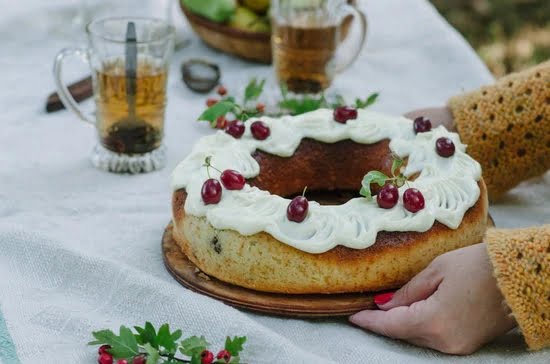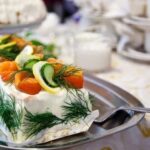How long does non decorated cake last? This is a common question that many bakers and cake enthusiasts often find themselves pondering.
Whether you have recently baked a simple cake or purchased one from your local bakery, understanding the shelf life of non-decorated cakes is crucial to enjoying them at their best. In this article, we will delve into the factors affecting the longevity of non-decorated cakes, uncover the science behind their shelf life, explore storage secrets for keeping them fresh, and discuss creative ways to utilize any leftovers.
Non-decorated cakes refer to those without any intricate designs or frosting. These cakes can include classic flavors like vanilla, chocolate, or pound cake, among others. While they may not have the ornate decorations that make celebration cakes stand out, they still bring forth their own delicious simplicity. However, like all perishable baked goods, non-decorated cakes have a limited lifespan.
Several factors come into play when determining how long a non-decorated cake will remain fresh and enjoyable. The quality of ingredients used in the baking process plays a significant role. Additionally, the method used to bake the cake can impact its longevity.
Proper storage practices are also crucial in extending the shelf life of these treats. Whether you prefer to keep it at room temperature or refrigerate it can make a difference in how long your dessert stays delectable. Furthermore, freezing non-decorated cakes is an option worth exploring for those looking to preserve them for an extended period.
In this comprehensive guide, we will address each aspect individually and provide practical tips on achieving optimal shelf life for your non-decorated cakes. From identifying signs of spoilage to utilizing leftover cake creatively, we aim to equip you with knowledge that ensures no slice goes wasted. So let’s dive deeper into this delightful world of baked goods and uncover all there is to know about how long non-decorated cakes last.
Factors Affecting the Longevity of Non-Decorated Cakes
Moisture Content
One of the key factors that can affect the longevity of non-decorated cakes is their moisture content. Cakes with higher moisture levels tend to have a shorter shelf life compared to those with lower moisture levels. This is because moisture provides an environment for bacteria and mold to thrive, leading to spoilage.
To extend the shelf life of non-decorated cakes, it’s essential to ensure that they are baked until just moist enough, without being overly wet. Additionally, storing the cakes in a dry and cool place can help prevent moisture buildup and preserve their freshness for a longer time.
Ingredients Used
The ingredients used in non-decorated cakes also play a significant role in determining their shelf life. Certain ingredients, such as dairy products like milk or cream, can contribute to faster spoilage due to their perishable nature. On the other hand, ingredients like oil or butter have longer stability and can help prolong the cake’s freshness.
It’s important to consider the quality of ingredients used as well. Using fresh and high-quality ingredients not only enhances the taste but also ensures a longer shelf life.
Environmental Factors
Environmental factors like temperature and humidity can greatly impact the longevity of non-decorated cakes. Cakes stored in hot and humid conditions are more prone to mold growth and bacterial contamination, which can lead to spoilage even within a short period of time. It’s crucial to store non-decorated cakes in a cool and dry place away from direct sunlight and heat sources.
The ideal temperature range for storing non-decorated cakes is between 40°F (4°C) and 70°F (21°C). By controlling these environmental factors, you can significantly extend the shelf life of your cakes and maintain their quality for longer periods.
The Science Behind Shelf Life
When it comes to understanding the shelf life of non-decorated cakes, it is important to delve into the science behind the ingredients used. Each ingredient plays a crucial role in determining how long a cake can remain fresh and edible. Let’s take a closer look at some key ingredients and their impact on the longevity of non-decorated cakes.
- Flour: The type of flour used in a cake can affect its shelf life. Cakes made with all-purpose flour generally have a longer shelf life compared to those made with cake or pastry flour. The protein content in all-purpose flour helps provide structure and stability, allowing the cake to maintain its texture for longer periods.
- Sugar: Sugar acts as both a sweetener and a preservative in cakes. Its hygroscopic properties help retain moisture, preventing the cake from drying out quickly. Additionally, sugar has antimicrobial properties that inhibit microbial growth, prolonging the shelf life of non-decorated cakes.
- Fat: Whether using butter or oil, fats contribute to the richness and flavor of cakes. They also play an important role in extending their shelf life. Fats create a barrier that slows down moisture migration within the cake, reducing the risk of staleness over time.
- Eggs: Eggs not only add moisture but also act as emulsifiers in cakes. They help bind ingredients together and create a stable structure. This structural stability contributes to a longer shelf life by preventing collapse or crumbly texture.
- Leaveners: Baking powder and baking soda are leaveners commonly used in cakes. These leavening agents produce carbon dioxide gas when combined with heat and liquid, causing the cake to rise. The presence of leaveners enhances the texture and lightness of non-decorated cakes, contributing to their overall quality during storage.
Understanding how these ingredients interact with one another provides valuable insights into why certain cakes have longer shelf lives than others. By selecting appropriate ingredients and following proper storage practices, you can maximize the longevity of your non-decorated cakes and ensure they stay fresh for as long as possible.
Some tips for maximizing shelf life with ingredients include
- Using all-purpose flour instead of cake or pastry flour.
- Adding a little extra sugar to retain moisture.
- Opting for butter or oil with a high fat content.
- Ensuring eggs are fresh and properly incorporated into the batter.
- Measuring leaveners accurately to achieve optimal texture.
By paying attention to these details and understanding how ingredients can impact shelf life, you can enhance the overall quality of your non-decorated cakes and prolong their enjoyment.
Baked to Perfection
Effect of Baking Method on the Shelf Life
The baking method used for non-decorated cakes can have a significant impact on their shelf life. Different baking techniques and temperatures can affect the texture, moisture content, and overall stability of the cake, ultimately influencing its longevity.
Baking at Conventional Oven Temperatures
One common method of baking non-decorated cakes is using a conventional oven at standard temperatures. This method typically involves preheating the oven to around 350°F (175°C) and baking the cake for a specified time period.
Baking at these temperatures ensures that the cake is thoroughly cooked and safe to consume. However, it may cause some moisture loss during the baking process, resulting in a drier texture compared to other methods.
The shelf life of cakes baked at conventional oven temperatures is usually around 2-4 days when stored properly. It’s important to note that factors like humidity and exposure to air can also affect their longevity.
Alternative Baking Methods
In addition to conventional ovens, there are alternative baking methods that can extend the shelf life of non-decorated cakes. One such method is known as “low and slow” baking. This technique involves cooking the cake at a lower temperature for a longer duration.
By baking at lower temperatures (around 300°F or 150°C), the cake retains more moisture within its structure. This results in a moister texture and helps prolong its freshness. Non-decorated cakes baked using this method can typically last up to 4-6 days when stored correctly.
Another alternative baking method is steaming or boiling the cake batter instead of traditional baking in an oven. Steaming helps retain moisture and produces a denser, pudding-like texture. These types of non-decorated cakes tend to have a longer shelf life and can be kept fresh for up to a week if stored appropriately.
Storage Secrets
When it comes to preserving the freshness of non-decorated cakes, proper storage is essential. Following best practices can help extend the shelf life and ensure that your cake remains moist and delicious for as long as possible. Here are some storage secrets to keep in mind:
- Cooling: Before storing your non-decorated cake, it’s important to let it cool completely. Placing a warm cake in an airtight container or wrapping it in plastic wrap can trap moisture and lead to the growth of mold or bacteria. Allow the cake to cool on a wire rack for at least one hour before moving on to the next step.
- Airtight Containers: Investing in a good quality airtight container is crucial for maintaining the freshness of your non-decorated cake. Place the cooled cake in a container that seals tightly, ensuring that no air or moisture can enter. Make sure the container is clean and dry before adding the cake.
- Refrigeration: While some cakes can be stored at room temperature, refrigerating your non-decorated cake can significantly prolong its shelf life. Place the airtight container in the refrigerator and try to store it away from any strong-smelling foods that may transfer their flavors onto the cake. Remember, refrigerating your cake will also make it firmer, so allow it to come to room temperature before serving.
Properly storing your non-decorated cake will help maintain its freshness and prevent spoilage. However, it’s important to note that different types of cakes may have varying shelf lives even with optimal storage conditions. It’s always best to refer to specific recipes or consult professional bakers for more accurate guidance on how long your particular non-decorated cake can last.
How Long Can You Keep Non-Decorated Cakes at Room Temperature?
Non-decorated cakes are a versatile and delicious treat that can be enjoyed fresh or stored for later consumption. However, it is essential to understand the proper storage methods to maintain their quality and ensure food safety. One common question that arises is how long non-decorated cakes can be kept at room temperature.
The shelf life of non-decorated cakes at room temperature depends on various factors, including the ingredients used, the baking method employed, and how the cake is stored. Generally, non-decorated cakes can safely be kept at room temperature for 2-3 days. However, this timeline may vary depending on specific circumstances.
To determine how long your non-decorated cake will last at room temperature, several key factors need to be considered. These factors include the moisture content of the cake, the presence of perishable additives such as fruits or dairy products, and the overall humidity and temperature of your environment. By understanding these elements, you can make an informed decision about how best to store your non-decorated cake.
It is important to note that while non-decorated cakes can typically be kept at room temperature for a few days, it is always recommended to err on the side of caution when it comes to food safety. If you notice any signs of spoilage such as mold growth, off smells or flavors, or a change in texture or appearance, it is best to discard the cake rather than risking any potential health issues.
Extending the Shelf Life
Refrigeration is one of the most effective methods to extend the shelf life of non-decorated cakes. By storing your cake in the refrigerator, you can help slow down the growth of bacteria and prevent spoilage. Here are some best practices to keep in mind when refrigerating your non-decorated cakes:
Properly wrap and store
Before placing your cake in the refrigerator, make sure it is well-wrapped to prevent it from drying out or absorbing any odors from other foods in the fridge. You can use plastic wrap or an airtight container specifically designed for cakes.
Keep away from strong odors
It’s essential to store your non-decorated cake away from any strong-smelling foods in the refrigerator, as cakes tend to absorb odors easily. This includes storing them separately from items like garlic, onions, or pungent cheeses.
Avoid condensation
Moisture can be detrimental to the texture and freshness of your cake. To prevent condensation from forming, allow your cake to cool completely before refrigerating and avoid placing a warm cake directly into cold storage.
Optimal temperature
Set your refrigerator temperature at around 40°F (4°C) or below to ensure that your non-decorated cake stays fresh for as long as possible. Higher temperatures may accelerate spoilage.
Durations
Depending on its ingredients and how it was stored beforehand, a non-decorated cake can typically last around 4-7 days when refrigerated properly. However, always check for signs of spoilage before consuming.
Remember that refrigeration can alter the texture of some cakes, particularly those with delicate frostings or fillings. If you notice any changes in texture or taste after refrigeration, consider allowing your cake to sit at room temperature for a short while before serving to regain its desired consistency.
While refrigeration can significantly extend the shelf life of non-decorated cakes, it’s important to note that it is not a foolproof method. Eventually, all cakes will reach a point where they are no longer safe to consume. In the next section, we will discuss the option of freezing non-decorated cakes and provide tips and tricks for maintaining their quality while in frozen storage.
The Freezing Game
Can Non-Decorated Cakes Be Frozen?
Freezing non-decorated cakes is a great way to extend their shelf life and ensure that you always have a delicious treat on hand. However, not all cakes are suitable for freezing, and there are certain tips and tricks to keep in mind to maintain the quality and taste of the cake after it has been thawed.
Tips for Freezing Non-Decorated Cakes
Before freezing a non-decorated cake, it is important to properly prepare it to prevent any issues during the thawing process. Here are some essential tips for freezing non-decorated cakes:
- Cool the cake completely: Allow the cake to cool completely before freezing. This ensures that excess moisture is evaporated, preventing any ice crystals from forming on the surface of the cake during freezing.
- Wrap it well: Wrap the non-decorated cake tightly in multiple layers of plastic wrap or aluminum foil. This will prevent freezer burn and help maintain the moisture of the cake while in the freezer.
- Use an airtight container: If you prefer not to use plastic wrap or aluminum foil, you can also freeze your non-decorated cake in an airtight container. Make sure to choose a container that is just big enough to hold the cake without leaving too much empty space.
- Label and date: Remember to label your frozen non-decorated cake with its name and date of freezing. This will allow you to keep track of how long it has been stored in the freezer.
- Place it in the freezer: Finally, place your wrapped or containerized non-decorated cake in the freezer as soon as possible after cooling and wrapping.
Tips for Thawing Frozen Non-Decorated Cakes
Thawing frozen non-decorated cakes requires some patience and care to ensure that the cake retains its texture and taste. Here are some tips for thawing frozen non-decorated cakes:
- Thaw in the refrigerator: The best way to thaw a frozen non-decorated cake is to transfer it from the freezer to the refrigerator. This slow, gradual thawing process helps maintain the moisture of the cake and prevents any drastic temperature changes.
- Remove packaging: Once the cake has thawed completely in the refrigerator, remove any plastic wrap or container before bringing it to room temperature.
- Bring to room temperature: Allow the non-decorated cake to come to room temperature on a wire rack before serving or decorating.
- Use as quickly as possible: It is advisable to use your thawed non-decorated cake as soon as possible after it has been brought back to room temperature. This will ensure that it maintains its freshness and quality.
By following these freezing and thawing tips, you can successfully freeze non-decorated cakes without compromising their taste and texture. Freezing allows you to have a homemade treat ready whenever you need it, making it a convenient option for those who enjoy baking but don’t always have time to do so on demand.
Identifying Signs of Spoilage
One of the most important aspects of food safety is knowing when to bid farewell to a cake that has started to spoil. While non-decorated cakes may have a longer shelf life compared to decorated ones, it is still crucial to be able to identify signs of spoilage in order to prevent any potential foodborne illnesses. Here are some key indicators to look out for when determining if your non-decorated cake has gone bad:
- Mold Growth: One of the most obvious signs of spoilage is the growth of mold on the cake. Mold can appear in different colors, such as green, white, or black, and often appears as fuzzy patches on the surface. It is important to note that even if mold does not appear on the surface, it may still be present beneath the surface and should be discarded.
- Unpleasant Odor: If your non-decorated cake gives off a strong, foul odor, it is likely an indication that it has spoiled. A fresh cake should have a pleasant aroma, so any noticeable change in smell should raise concerns about its freshness.
- Texture Changes: Pay attention to any changes in the texture of your non-decorated cake. Spoiled cakes may become sticky, slimy, or develop a spongy consistency that differs from its original texture. These changes are often caused by microbial growth and indicate that the cake should not be consumed.
To ensure food safety, it is crucial to adhere to these guidelines and discard any non-decorated cakes that show signs of spoilage. Eating spoiled food can lead to various health issues such as food poisoning or gastrointestinal problems. Remember that it’s always better to err on the side of caution and prioritize your well-being when it comes to consuming perishable foods.
| Indicator | Signs of Spoilage |
|---|---|
| Mold Growth | Visible fuzzy patches in various colors, such as green, white, or black. |
| Odor | Foul or unpleasant smell that differs from the cake’s original aroma. |
| Texture Changes | Stickiness, sliminess, or spongy consistency. |
Utilizing Leftover Non-Decorated Cakes
As much as we strive to consume our non-decorated cakes while they are fresh, there are times when we find ourselves with leftovers. Rather than letting these delicious treats go to waste, there are many creative ways to utilize them and avoid wastage. Here are some ideas:
- Cake Pops: One of the most popular ways to use leftover cake is by turning it into cake pops. Simply crumble the cake into fine crumbs and mix it with a binding agent such as frosting or melted chocolate. Roll the mixture into small balls and insert a lollipop stick into each one. Dip the cake pops in melted chocolate or candy coating and let them set before enjoying.
- Trifles: Another great option for utilizing leftover non-decorated cakes is by making trifles. Cut the cake into bite-sized cubes and layer them in serving dishes with whipped cream, fruits, and other desired fillings. Repeat the layers until you’ve used all the ingredients and chill in the refrigerator for a couple of hours to allow the flavors to meld together.
- Bread Pudding: Leftover cake can also be used to make a scrumptious bread pudding. Tear the cake into small pieces and place them in a baking dish. In a separate bowl, whisk together eggs, milk, sugar, vanilla extract, and any other desired flavorings such as cinnamon or nutmeg.
Pour this mixture over the cake pieces and let it sit for about 30 minutes so that the cake absorbs the liquid. Bake in the oven until golden brown and serve warm with a drizzle of caramel sauce or a dusting of powdered sugar.
| Idea | Description |
|---|---|
| Cake Pops | Crumble the cake, mix with binding agent, roll into balls with lollipop sticks, dip in melted chocolate or candy coating |
| Trifles | Cut cake into cubes, layer in serving dish with whipped cream, fruits, and other fillings |
| Bread Pudding | Tear cake into pieces, soak in mixture of eggs, milk, sugar, and flavors; bake until golden brown |
By using these creative ideas to repurpose your leftover non-decorated cakes, you can avoid wasting them while enjoying new and exciting treats. Get creative and experiment with different flavor combinations to maximize the potential of your delicious leftovers. Remember to store any uneaten creations properly to maintain their freshness for as long as possible.
Final Thoughts
In conclusion, understanding the shelf life of non-decorated cakes is essential for maintaining their optimal freshness and flavor. Factors such as ingredients, baking method, and storage practices all play a crucial role in determining how long these cakes can last. By following best practices and being aware of signs of spoilage, you can ensure that your non-decorated cakes stay fresh for as long as possible.
One important aspect to consider is the use of high-quality ingredients. Fresh and properly stored ingredients will not only enhance the taste of your cake but also contribute to its longevity. It is recommended to use fresh eggs, good-quality butter, and carefully measured flour and sugar for the best results.
The baking method also impacts the shelf life of non-decorated cakes. Properly baked cakes that have been cooked evenly and fully tend to last longer. It is important to follow recipe instructions when it comes to temperature settings and baking times to avoid under or overcooking your cake.
Storage practices are key in maintaining the freshness of non-decorated cakes. Storing them at room temperature can be suitable for short-term consumption, but refrigeration can significantly extend their shelf life. To prevent dryness, it is crucial to store these cakes in airtight containers or wrap them tightly in plastic wrap before refrigerating.
Frequently Asked Questions
How do you store a cake that is not frosted?
To store a cake that is not frosted, it is important to ensure that it remains fresh and moist. The best way to do this is by tightly wrapping the cake in plastic wrap or placing it in an airtight container.
This will prevent the cake from drying out and keep it protected from any external elements. It is advisable to refrigerate the unfrosted cake if you plan on storing it for more than a day, as this helps maintain its freshness.
How long does it take for cake to go bad?
The shelf life of a cake depends on various factors such as ingredients used, storage conditions, and the overall quality of the cake itself. In general, a properly stored cake can last for about 2-3 days at room temperature before showing signs of spoilage or going bad.
However, this timeframe can vary depending on factors mentioned earlier. It’s essential to inspect the cake visually and check for any mold growth or unusual smells before consuming it after the recommended time frame.
How long can you keep a cake before decorating?
If you need to keep a cake before decorating it, there are certain guidelines to follow to ensure its freshness and quality. Typically, an unopened store-bought cake can be kept at room temperature for around 2-3 days before decorating without significant issues.
On the other hand, homemade cakes have shorter shelf lives and are best consumed within 1-2 days if left unfrosted. It’s crucial to cover the cake well with plastic wrap or store it in an airtight container during this period so that it remains moist and protected from external influences like air and humidity.

Welcome to our cake decorating blog! My name is Destiny Flores, and I am the proud owner of a cake decorating business named Cake Karma. Our mission is to provide delicious, beautiful cakes for all occasions. We specialize in creating custom cakes that are tailored specifically to each customer’s individual needs and tastes.





